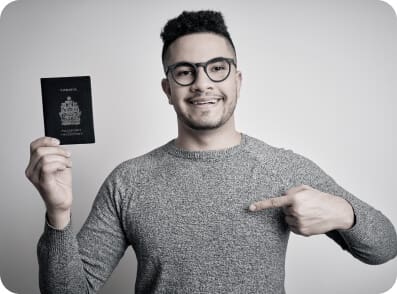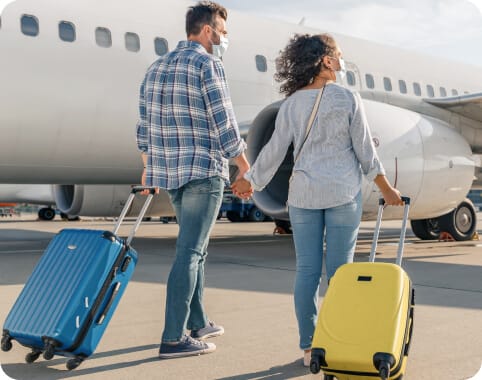Traveling abroad for leisure often begins with excitement — choosing destinations, planning an itinerary, imagining new foods and sights. For many travelers, the first administrative step that turns travel plans into reality is obtaining a tourist visa (also called a visitor visa, short‑term visa, or temporary resident/entry permit depending on the country). While individual countries differ in rules, timelines, and documentation, the underlying process shares common stages. This post walks you step‑by‑step through the typical tourist visa application journey, explains common document requirements, highlights frequent pitfalls, and offers practical tips to improve your chances of approval and avoid delays.
Overview: Why a Tourist Visa Matters
A tourist visa is a formal permission granted by a destination country that allows a foreign national to enter for a limited, non‑immigrant purpose such as sightseeing, visiting friends or family, short courses, or attending events. Not all travelers need one; many countries have visa‑exemption arrangements or visa‑on‑arrival programs. When a visa is required, a well‑prepared application demonstrates that you meet entry conditions (e.g., intent to stay temporarily, sufficient funds, ties to your home country) and reduces the risk of denial or complications on arrival.
- Check whether you need a visa
- Visit the official immigration or embassy/consulate website of the destination country.
- Check passport nationality, length of stay, purpose of visit, and whether transit requires a visa.
- Note special rules for dual nationals, minors, and holders of diplomatic or official passports.
- Determine the correct visa type
- Tourist/visitor visa: leisure, short family/friend visits, limited activities.
- Some countries offer multiple categories (single vs. multiple entry, short stay vs. extended stay).
- Choose the right category to avoid being refused at the border.
- Review entry requirements and gather documents
Although required documents vary, most countries request a similar core set:
- Valid passport
- Typically valid for at least 6 months beyond intended stay; some require blank pages.
- Completed visa application form
- Online form or paper form, completed accurately and signed where required.
- Recent passport-sized photographs
- Meet country-specific size, background color, and facial expression rules.
- Proof of travel itinerary
- Round‑trip flight reservation or booking, ferry tickets, or other transport plans.
- Some countries accept a fully flexible itinerary; others want confirmed tickets.
- Proof of accommodation
- Hotel bookings, host invitation letter, or rental confirmation.
- Proof of financial means
- Recent bank statements, payslips, sponsorship letters, proof of assets, or cash equivalent to expected expenses during the stay.
- Travel medical insurance (if required)
- Coverage amount and scope vary; Schengen states commonly require minimum coverage of €30,000 that includes repatriation and medical costs.
- Proof of ties to home country
- Employment letter, enrollment letter for students, property deeds, family ties, or other evidence showing you’ll return home.
- Purpose‑specific documents
- Invitation letters, proof of event/conference registration, tour confirmations.
- Visa fee payment
- Visa application fee — check accepted payment methods and whether it’s refundable.
- Complete the application
- Online systems: many countries require electronic applications (e‑visa portals).
- Paper or in‑person: some countries still use printed applications lodged at consulates or visa centers.
- Fill out forms carefully; inconsistent or false information increases risk of refusal.
- Book an appointment (if required)
- In‑person submission or biometrics appointment may be required at an embassy, consulate, or visa application center (VAC).
- Popular destinations can have long appointment waits—book early.
- Some VACs accept document drop‑off services via authorized agencies.
- Attend the appointment / submit documents
- Bring originals and photocopies of all required documents.
- Be prepared to provide biometrics (fingerprints, photo) and have identification verified.
- Some countries conduct a short interview; answer clearly and truthfully.
- Wait for processing
- Processing times vary widely: a few days to several weeks depending on country, season, completeness of application, consular workload, and whether additional checks are needed.
- Expedited processing may be available for a higher fee in some cases.
- Receive decision and collect visa
- If approved, you’ll either receive a sticker/label in your passport, an electronic visa (e‑visa) you print, or an approval notice to present on arrival.
- If denied, you will typically receive a refusal letter explaining the reason and whether you can appeal or reapply.
- Check the visa details carefully (validity dates, number of entries, permitted duration per visit) to avoid problems later.
Typical Timelines and When to Apply
- Best practice: apply well in advance—generally 2–8 weeks before travel. High volume seasons, national holidays, or special events can extend processing times.
- Schengen visas: submit no more than 6 months and no later than 15 calendar days before travel (common guidance: 15–30 days prior).
- U.S. B‑2 visas: interviews and processing can take several weeks to months depending on location.
- E‑visas: often processed faster (days), but still apply early in case of issues.
Common Reasons Visas Are Denied
- Insufficient supporting documents (e.g., missing bank statements, unclear itinerary).
- Doubts about intent to return home (weak ties, inconsistent employment history).
- Inaccurate, inconsistent, or false information.
- Prior immigration violations or overstays in the destination or other countries.
- Criminal records (varies by country; some require disclosure).
- Inadequate travel/medical insurance when required.
- Incomplete or late application.
How to Improve Your Chances of Approval
- Read official embassy/consulate guidelines carefully and follow them exactly.
- Provide complete, organized, and consistent documentation.
- Use a cover letter summarizing your trip, dates, finances, and contact details, and explaining any unusual circumstances (e.g., short employment gap).
- Show strong ties to your home country: steady employment, property, family responsibilities, or study commitments.
- Demonstrate sufficient funds for the trip and return (bank statements, sponsor letters).
- Avoid last‑minute applications—give consular officers adequate time to process.
- If young or unemployed, provide extra supporting evidence (e.g., a sponsor’s affidavit, travel history, or invitation from family).
Special Cases and Additional Considerations
- Minors: require parental consent letters, copies of parents’ passports/IDs, birth certificates, and sometimes both parents’ signatures. Rules differ widely—check the destination’s specific requirements.
- Group travel / tour groups: consolidated documents from tour operators can simplify some processes.
- Visa on Arrival vs. e‑visa vs. consular visa: know which system applies; e‑visas typically involve an online form and payment, while visa‑on‑arrival may require minimal paperwork on entry but carries risk (long queues, possible refusal).
- Multiple entries vs single entry: choose multi‑entry if you plan to leave and re‑enter frequently during the visa’s validity.
- Transit visas: some countries require visas even if just changing planes; check airline and country rules well in advance.
- Visa fee refunds: most consulates do not refund visa application fees if the visa is denied.
Costs and Other Financial Considerations
- Application fees vary by destination and sometimes by nationality. Fees may also vary by processing speed and whether an appointment at a VAC is used.
- Additional costs: travel to the consulate/VAC, visa service charges from third‑party agents, translation or notarization fees, medical insurance premiums, and courier fees for passport return.
- Budget for possible unforeseen costs if you must reapply or fix missing documentation.
What to Do If Your Visa Is Denied
- Read the refusal letter carefully to understand the basis for denial.
- Determine whether an appeal is possible and whether it’s advisable.
- Consider reapplying with more complete or stronger evidence addressing the refusal reasons.
- If denial is related to criminal history, immigration violations, or national security concerns, legal advice may be necessary.
- Keep records of all correspondence and documentation in case of further proceedings.
Arrival: What to Expect at the Border
- Even with a visa, final admission is decided by the border officer.
- Be ready to show your passport and visa, travel itinerary, proof of funds, return ticket, and address of stay.
- Expect questions about length and purpose of stay; answer honestly and succinctly.
- Overstays can lead to fines, deportation, bans, and complications in obtaining future visas—adhere to permitted stay limits.
Practical Tips and Checklist Before You Apply
- Check the official embassy/consulate page—rules change. Do not rely solely on third‑party websites.
- Make clear copies of everything you submit and keep originals organized.
- Translate and notarize documents if required.
- Confirm the photo specifications and submit acceptable photographs.
- Keep a timeline and track appointments and processing windows.
- Consider using a licensed visa service or travel agent only when necessary, and verify their credentials and fees.
- For multi‑country trips, check each country’s entry rules (transit, visa policies). Some countries require visas for transit as well.
- If you have a complex case (criminal history, prior immigration issues, or unusual employment), consider consulting an immigration attorney or accredited advisor before applying.
Realistic Expectations and Final Thoughts
The tourist visa application process is a mix of paperwork, proof, and persuasion. Consular officers want reassurance that you will travel for a legitimate, temporary purpose and that you will return home. Presenting clear, truthful, and well‑organized documentation that addresses those concerns typically produces the best outcomes.
While the core steps — determining requirements, gathering documents, submitting the application, attending appointments, and waiting for a decision — are consistent across many countries, the details matter. Timelines, specific documentary requirements, fees, and biometric or interview procedures will differ. Start early, follow official guidance closely, and treat your application like a short, formal business proposal: complete, credible, and convincing.





